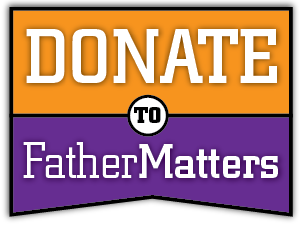Why teachers are fleeing Arizona in droves
By Valerie Strauss
Teachers have been fleeing Arizona in droves, resulting in such a serious shortage of experienced teachers that state officials are warning of serious consequences if the exodus continues.
Over the last five years, thousands of teachers have left the state, according to a 2015 report by the Arizona Department of Education, with this past school year being possibly the worst. The report warns if teachers keep leaving, “students will not meet their full potential” and “Arizona will not be able to ensure economic prosperity for its citizens and create the workforce of tomorrow.” It calls for increased pay for teachers and more overall education funding in the state.
Why are so many teachers leaving? Educators say reasons include low pay, insufficient classroom resources, and so many testing requirements and teaching guidelines that they feel they have no flexibility and too little authentic instructional time. According to new Census Bureau statistics, Arizona is near the bottom of a state list of spending per student, $7,208. The average per pupil spending around the country is $10,700, and the state is near or at the bottom for classroom spending per student. But it is near the top of a list of states showing which ones get the biggest percentage of their education revenue from the federal government.
In the Miami Unified School District east of [Phoenix], the superintendent is also a grant writer and the principal of the elementary school is also in charge of keeping the toilets running, as the district’s director of maintenance.
“We’ve asked our teachers to double up — everybody is doubling up,” said Sherry Dorathy, the superintendent of the district, which is facing a 4 percent cut in next year’s budget. “And we haven’t given our teachers a raise in seven years.”
A survey conducted by the Arizona Superintendents Association of the 2013-2014 school year found that of the 79 districts who responded, 62 percent reported having open teaching positions within their schools, and during the same year, districts and charters reported that 938 open teaching positions were filled by substitute teacher, a 29 percent increase in the number of long-term substitutes from the previous school year. A 2014 Arizona Department of Education survey found that 53 percent of districts and charter schools reported they had between one and five educators break their contract or resign midyear during the 2013-2014 school year. Things only seemed to get worse in the 2014-15 school year, the report said. And making the outlook even “bleaker,” the report says that more than 24 percent of the educational workforce is eligible to retire within the next few years.
The Arizona Education News Service quoted Kristie Martorelli, the Arizona Educational Foundation’s 2012 Teacher of the Year, as saying: “Arizona is facing a crisis in education right now.”
The report said that fewer Arizona residents want to become teachers, and that the force of veteran teachers is shrinking. In 1987-1988, the “most common” teacher had 15 years of experience, but by 2011-2012, the “most common teacher” had five years of experience. In 2013-14, 29 percent of Arizona’s teachers had three or less years of experience, and 24 percent of first-year teachers and 20 percent of second-year teachers left their positions and were not reported as teaching in the state.
The average teacher salary in the state was $49,885 in 2013, which is low compared to nearby states such as California ($69,324), Nevada ($55,957, and Oregon ($57,612), the report says. “Many times young teachers cannot find affordable housing in the communities in which they teach, struggle to pay off student loans, and take on additional jobs,” it says. The report says that the average starting salary for a teacher in 2013 in Arizona was $31,874. That’s 20 percent higher than in 2003. During that same decade, the minimum wage jumped 53 percent.
Andrew Morrill, the president of the Arizona Education Association, told CBS 5 in Phoenix that along with low education spending and low salaries, teachers feel under siege by so many testing and instruction guidelines. He said: “We think this is the largest documented teacher shortage that Arizona has faced in decades.”
The New York Times reported that Arizona Gov. Doug Ducey boosted education spending in the state by 2 percent in his 2016 budget, but that is still less than about 15 percent than in 2007, just before the national recession began. Ducey, who in 2012 helped defeat a sales-tax increase to provide more education revenue, now supports a proposal to be placed on the 2016 ballot that would allow the state to use $1.8 billion over five years for schools from the state’s Permanent Land Endowment Trust Fund.
But that doesn’t help schools now. And it hardly makes Ducey a supporter of public education funding, either at the K-12 or higher education level. While other states are trying to beef up funding for community colleges, Ducey and the Arizona legislature have, according to InsideHigherEd.com, moved to end all state funding for two of the largest in the state. It also reported that Arizona “ranks first in the country in steep cuts to higher education budgets.” The Legislature recently passed a 2016 budget that slashed $99 million — or more than 10 percent from state higher education funding.
The Arizona Education Department report included a long list of recomendations for policymakers that includes:
Elevate positive reinforcement for the role our educators play in ensuring success for all students
▪ Publicly acknowledge the value of the teaching profession and the critical need for effective teachers in all Arizona classrooms
• Acknowledge the critical need for improved educator retention in Arizona
▪ Become knowledgeable regarding the current situation and the predicted trends in teacher retention
▪ Participate in ongoing discussions designed to develop solutions to improve teacher retention
• Help to improve the respect afforded educators
▪ Publicly acknowledge the value of the teaching profession
▪ Share stories of effective teachers across Arizona
• Support policies that acknowledge the professionalism of teachers
• Review and act on recommendations to streamline teacher certification
• Support evidence-based best practices in educator evaluation
▪ Become knowledgeable regarding evidence-based best practices in educator evaluation
Acknowledge that the teacher retention crisis cannot be effectively curtailed without additional funding dedicated to teacher compensation
▪ Support a statewide increase in funding for K-12 schools to address teacher compensation issues
▪ Understand the competitive marketplace and the variety of other professions with which schools must compete for teachers




